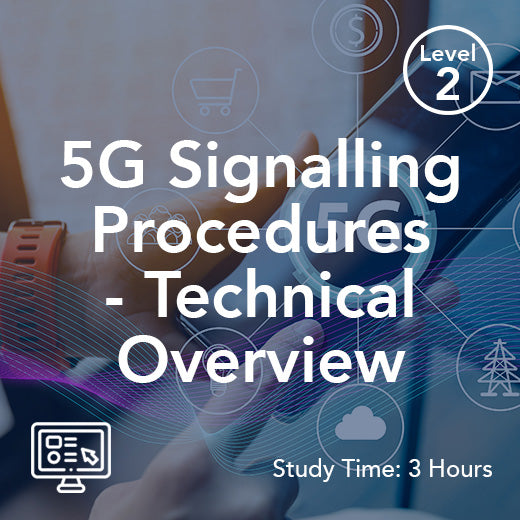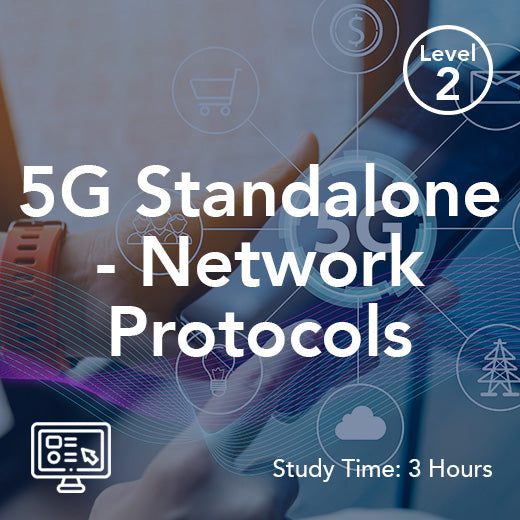Mobil Sonlandırma Oranını Anlamak: Sizin İçin Ne Anlama Geliyor?
- , by Stephanie Burrell
- 11 min reading time
Mobil iletişim dünyasında, çeşitli ücretlerin telefon faturanızı nasıl etkilediğini anlamak biraz kafa karıştırıcı olabilir. Bu ücretlerden biri, operatörlerin farklı şebekeler arasında aramaları bağlamak için birbirlerinden aldıkları bir ücret olan mobil sonlandırma ücretidir. Bu ücret, özellikle farklı bir şebekede birini aradığınızda, hem mobil hem de sesli aramalar dahil olmak üzere, telefon görüşmelerinizin maliyetlerinin belirlenmesinde önemli bir rol oynar. Bu ücretlerin nasıl işlediğini ve neden önemli olduğunu açıklayarak, hem cüzdanınız hem de genel mobil pazar üzerindeki etkilerini netleştirmeyi amaçlıyoruz. Mobil sonlandırma ücretlerinin sizin için ne anlama geldiğini ve iletişim kurma şeklimizi nasıl şekillendirdiğini keşfetmek için bize katılın; bu, düzenleyici ve sektör açısından önemli bir konudur.
Mobil Sonlandırma Ücretleri Nelerdir?
Mobil sonlandırma ücretleri (MTR'ler), mobil ağların finansal olarak nasıl işlediğini anlamak için temel teşkil eder. Bu ücretler, farklı ağlar arasında aramaları birbirine bağlamak için gereklidir. Operatörlerin aramaları bağlamak için birbirlerinden aldıkları bir ücrettir (sonlandırma ücreti olarak bilinir) ve hem operatörleri hem de tüketicileri etkiler. Mobil sonlandırma ücretleri, arama, SMS veya veri gibi farklı telekomünikasyon hizmetleri için ücretlendirme şeklinde olabilir. MTR'lerin ne olduğunu ve neden önemli olduklarını inceleyelim.
Tanım ve Temeller
Mobil sonlandırma ücretleri , bir operatörün şebekesindeki aramaları sonlandırmak için diğerine uyguladığı ücretlerdir. Esasen, bir şebekeden diğerine yapılan bir aramanın tamamlanma maliyetidir. Bu ücret, mobil operatörlerin maliyet yapısının bir kısmını belirlediği için hayati önem taşır.
Konsept oldukça basit:
Bir çağrı yaptığınızda, arayan tarafın şebeke operatörü süreci başlatır ve çağrılar bir şebekeden başlayarak diğer şebeke üzerinden aranan tarafa iletilir.
Bu ücret MTR'dir ve farklı ülkelere ve düzenleyici ortamlara göre değişiklik gösterir.
Faiz oranı genellikle adil rekabeti sağlamak amacıyla düzenleyici otoriteler tarafından belirlenir.
Mobil sonlandırma ücretleri bağlamında, arayan tarafın şebeke operatörü kendi abonelerinden gelen çağrıları işlerken, aranan tarafın şebeke operatörü çağrıyı alır ve MTR'yi belirler. Aranan tarafın bu ücretleri belirleme yetkisi, düzenleyici çerçeve kapsamında maliyet belirleme yetkisinin aranan tarafta olması nedeniyle tekel sorunu yaratabilir.
MTR'ler telekomünikasyon sektöründe fiyatlandırma stratejilerini ve tüketici faturalarını etkileyerek önemli bir rol oynuyor.
Nasıl Çalışırlar?
MTR'lerin işleyişi, ağ operatörleri arasındaki bir dizi etkileşim yoluyla anlaşılabilir:
Çağrı Başlatma: Bir numarayı çevirdiğinizde, şebekeniz gelen çağrıları alıcının şebekesine yönlendirme sürecini yönetir.
Ağlar Arası Ücret: Alıcının ağı, kendi ağında sonlandırılan çağrı için ağınızdan ücret alır.
Faturalandırma Etkisi: Bu ücret, ağınızın sizden çapraz ağ aramaları için ne kadar ücret talep edeceğini etkiler.
Başarılı bir çağrı sonlandırma, farklı ağlar arasında kurulan bağlantıya dayanır ve bu da her türlü bağlantının ve etkin çağrı yönlendirmesinin sağlanmasına olanak tanır.
Operatörler genellikle bu sonlandırma maliyetlerini tüketicilere yansıtarak telefon faturalarını etkiler. MTR'leri anlamak, tüketicilerin telekomünikasyon harcamaları hakkında bilinçli kararlar almalarına yardımcı olur.
Telekomünikasyonda Önemi
MTR'ler, telekomünikasyon sektöründe dengeyi korumada kritik öneme sahiptir. Tüm operatörlerin ağ altyapısının bakımıyla ilgili maliyetleri karşılayabilmesini sağlarlar. Bu, şu açılardan hayati önem taşır:
Rekabeti Teşvik Etmek: Yetkililer, mobil telefon operatörlerini düzenleyerek hem büyük hem de küçük operatörler için eşit şartlar yaratmayı amaçlamaktadır. Yerel telefon şirketleri, hücresel operatörler ve uluslararası operatörler de dahil olmak üzere farklı telekomünikasyon şirketleri, mobil telefon operatörleri düzenlemesinden etkilenmektedir ve bu da etkili bir şekilde rekabet etme yeteneklerini etkilemektedir.
Adil Fiyatlandırmanın Sağlanması: Uygun düzenlemeler, yüksek tüketici maliyetlerine yol açabilecek ve rekabet gücüne ve yapıya bağlı olarak farklı pazarlarda önemli etkilere sahip olabilecek aşırı oranların önlenmesini sağlar.
Özetle, mobil iletişim operatörleri (MTR), mobil sektöründe adil rekabet ve fiyatlandırma için olmazsa olmazdır. MTR'lerin uygun şekilde düzenlenmesi, hem tüketiciler hem de sektörün tamamı için değer sağlar.
Mobil Sonlandırmayı Etkileyen Faktörler
Mobil sonlandırma ücretleri, düzenleyici denetim, piyasa rekabeti, teknolojik ilerleme ve gelişen tüketici talebinin bir araya gelmesiyle şekillenir. Avrupa Komisyonu gibi düzenleyici kurumlar, adil rekabeti teşvik etmek ve tüketici refahını korumak amacıyla mobil sonlandırma ücretlerine ilişkin kılavuz ilkeler belirlemede önemli bir rol oynar. Bu kurumlar, net kurallar belirleyerek, sonlandırma ücretlerinin verimli bir seviyede kalmasını sağlayarak hem tüketicilere hem de küçük piyasa oyuncularına zarar verebilecek aşırı ücretlerin önlenmesine yardımcı olur.
Pazar rekabeti bir diğer önemli etkendir. Mobil operatörler müşteri kapma yarışında, yeni kullanıcılar çekmek ve mevcut kullanıcıları elde tutmak için genellikle daha düşük mobil sonlandırma ücretleri sunmaya çalışırlar. Bu rekabet baskısı, mobil hizmetler için daha düşük fiyatlara yol açabilir ve ağlar genelinde inovasyonu teşvik edebilir.
İnternet Protokolü Üzerinden Ses (VoIP) teknolojisinin yaygınlaşması ve LTE gibi gelişmiş mobil ağların yaygınlaşması da dahil olmak üzere teknolojik gelişmeler, mobil sonlandırma maliyetlerini önemli ölçüde azaltmıştır. Bu yenilikler, operatörlerin daha yüksek hacimli elektronik iletişimleri daha verimli bir şekilde yönetmesini sağlayarak daha düşük sonlandırma ücretlerine olanak tanır.
Son olarak, mobil hizmetlere ve elektronik iletişime olan talebin hızla artması, mobil sonlandırma ücretlerinin hem uygun maliyetli hem de ölçeklenebilir olmasını zorunlu hale getirmiştir. Giderek daha fazla insan günlük iletişim için mobil ağlara güvendikçe, sonlandırma ücretlerinin gerçek maliyetleri ve piyasa gerçeklerini yansıtmasını sağlamak, tüketici refahını sürdürmek ve mobil pazarın sürekli büyümesini desteklemek açısından hayati önem taşımaktadır.
Mobil Sonlandırma Ücretleri Hesaplaması
Mobil sonlandırma ücretlerinin hesaplanması, mobil pazarda adalet ve verimliliği sağlamayı amaçlayan karmaşık bir süreçtir. Başlangıç noktası, sonlandıran operatörün katlandığı maliyetlerin değerlendirilmesidir; bu maliyetler, şebeke bakımı, ekipman ve sonlandırma hizmetinin sürekli sağlanmasıyla ilgili giderleri içerir. Bu süreci standartlaştırmak için Avrupa Komisyonu, saf Uzun Vadeli Artımlı Maliyet (LRIC) modelinin kullanılmasını önermektedir.
Saf LRIC modeli, bir operatörün sonlandırma hizmetini sağlamaması durumunda katlanmayacağı kaçınılabilir maliyetlere odaklanır. Bu yaklaşım, ilgisiz genel giderleri hariç tutar ve yalnızca çağrıları sonlandırmanın gerçek, artımlı maliyetlerinin dikkate alınmasını sağlar. Mobil operatörler, bu modeli kullanarak, şebekelerinde çağrıları tamamlamanın gerçek maliyetini doğru bir şekilde yansıtan sonlandırma oranlarını belirleyebilirler.
Bu mobil sonlandırma ücretleri hesaplandıktan sonra, operatörler tarafından kendi ağlarındaki çağrıları sonlandıran diğer operatörlere fatura kesilir. Bu sistem, piyasada şeffaflık ve adaletin korunmasına yardımcı olur ve sonlandırma ücretlerinin şişirilmiş ücretler yerine gerçek maliyetlere dayanmasını sağlar. Sonuç olarak, bu durum hem operatörlere hem de tüketicilere daha düşük fiyatları destekleyerek ve ağ altyapısına verimli yatırım yapılmasını teşvik ederek fayda sağlar.
Mobil Sonlandırma Oranlarının Tarihsel Bağlamı
MTR'leri çevreleyen evrim ve düzenleyici değişiklikleri anlamak, mevcut durumlarına dair bir bağlam sağlar. Yıllar içinde bu oranlar, teknolojik gelişmeler ve düzenleyici müdahalelerin etkisiyle önemli dönüşümler geçirmiştir. MTR'lerin evrimi Avrupa genelinde ve ülkeden ülkeye farklılık göstermiş, farklı ülkeler benzersiz düzenleyici yaklaşımlar ve fiyatlandırma standartları benimsemiştir. Örneğin, bazı Avrupa ülkelerindeki düzenleyici değişiklikler, MTR'lerde önemli düşüşlere yol açmış ve bu durum, politika kararlarının fesih oranları üzerindeki etkisini göstermektedir.
Yıllar İçindeki Evrim
MTR'lerin tarihi, telekomünikasyon sektörünün daha geniş çaplı gelişimini yansıtır. Başlangıçta, sınırlı rekabet ve tekelci uygulamalar nedeniyle MTR'ler nispeten yüksekti ve bu da ilk dönemlerde MTR'lerin yüksek maliyetine yol açtı. Zamanla, teknoloji ilerledikçe:
Maliyet Azaltma: Geliştirilmiş teknoloji, çağrı sonlandırma maliyetini düşürerek daha düşük MTR'lere yol açtı ve düzenleyici önlemler nedeniyle ortalama MTR zaman içinde önemli ölçüde azaldı.
Artan Rekabet: Pazara yeni girenler rekabetçi fiyatlandırmayı teşvik etti ve MTR'leri düşürdü.
Tüketici Savunuculuğu: Artan tüketici bilinci ve savunuculuğu daha adil oranlar için baskı oluşturuyor.
Bu değişiklikler, MTR'lerin teknolojik ve piyasa değişimlerine nasıl uyum sağladığını göstermektedir. Düzenlemenin artan rolü, MTR'leri şekillendirmeye ve sektördeki maliyet yapılarını etkilemeye devam etmektedir.
Temel Düzenleyici Değişiklikler
Düzenleyici kurumlar, MTR politikalarının şekillendirilmesinde önemli bir rol oynamıştır. Başlıca değişiklikler şunlardır:
Ücret Tavanları: Yetkililer fahiş ücretleri önlemek için maksimum MTR'ler belirliyor.
Periyodik İncelemeler: Düzenli değerlendirmeler, oranların güncel piyasa koşullarını yansıtmasını sağlar.
Uluslararası Uyum: Avrupa Birliği ve üye devletleri, AB genelinde birleşik standartlar ve maliyet modelleri oluşturarak MTR'leri uyumlu hale getirmek için çalışmıştır. Avrupa Elektronik İletişim Kanunu (EECC), üye devletlerin tutarlı kurallar uygulaması için direktifler belirleyen MTR politikasını etkileyen önemli bir düzenleyici yasadır.
Bu düzenleyici müdahaleler adil rekabetin teşvik edilmesi ve tüketici çıkarlarının korunması açısından hayati öneme sahiptir.
Tüketiciler Üzerindeki Etki
MTR'lerin tüketiciler üzerindeki etkisi, telefon faturalarında ve hizmet kalitesinde açıkça görülmektedir. Tüketiciler, MTR'lerle ilişkili maliyetlerin bedelini ödemektedir, çünkü bu ücretler genellikle arama fiyatlarına yansır. Bu yönleri inceleyerek, MTR'lerin günlük mobil kullanıcılar üzerindeki gerçek dünya etkilerine, operatörler arasında arama sonlandırma ücretlerinin nasıl ödendiğine dair fikir ediniyoruz.
Faiz Oranları Faturalarınızı Nasıl Etkiler?
MTR'ler, özellikle farklı şebekelere yapılan aramalar için ödediğiniz ücreti doğrudan etkiler. Faturalarınızı şu şekilde etkiler:
Ağlar Arası Ücretler: MTR'ler nedeniyle diğer ağlara yapılan aramalar genellikle daha yüksek ücretlere tabidir. Uluslararası aramalar için, bölgesel fiyatlandırma yapılarını yansıtmak amacıyla bu ücretler yerel para birimlerinde listelenebilir.
Fiyatlandırma Planları: Operatörler, rekabet gücünü korumak için ağlar arası aramalar için daha düşük ücretli planlar sunabilir.
Tüketici Tercihi: MTR'lerin farkında olmak, tüketicilerin en uygun maliyetli planları seçmesine rehberlik edebilir.
Bu faktörlerin anlaşılması tüketicilerin telefon harcamalarını etkili bir şekilde yönetmelerine yardımcı olur.
Hizmet Kalitesi ve Bağlantı
Metrolar aynı zamanda hizmet ve bağlantı kalitesini de etkiler. İşte nasıl:
Ağ Yatırımı: Adil MTR'ler, operatörlerin altyapıya yatırım yapmak için fon sağlamasını ve hizmet kalitesini artırmasını sağlar. Ağlar arasında alışveriş edilen trafik hacmi, altyapı yatırımı ihtiyacını doğrudan etkiler; çünkü daha yüksek trafik, hizmet kalitesini korumak için daha güçlü sistemler gerektirir.
Hizmet Farklılıkları: Yüksek MTR'ler, ağlar arasında çağrı kalitesinde farklılıklara yol açabilir.
Yetkililer, MTR'leri düzenleyerek ağlar genelinde yüksek bir hizmet standardının korunmasına yardımcı oluyor.
Mobil Operatörler Üzerindeki Etki
Mobil arama operatörleri (MTR), operatörlerin iş modellerini önemli ölçüde etkileyerek gelir stratejilerini ve pazar dinamiklerini etkiler. Her mobil operatör, sonlandırma ücretlerinden doğrudan etkilenir; çünkü bu ücretler, şebekeler arası aramaların tamamlanma maliyetini belirler ve müzakereleri ve düzenleyici çerçeveleri etkiler. İş modeli bağlamında, sonlandırma süreci yalnızca kaynak şebekeyi değil, aynı zamanda aramanın tamamlandığı hedef şebekedeki abone olan çağrı alıcısını da içerir. Bu etkileri inceleyerek, operatörlerin MTR'lerin getirdiği zorluklarla nasıl başa çıktıklarını ve sonlandırma ücretlerinin operatör gelirlerinin önemli bir bileşeni olduğunu anlıyoruz.
Gelir Modelleri ve Fiyatlandırma Stratejileri
Operatörler gelir kaynağı olarak MTR'lere güvenir. Bu güven, fiyatlandırma stratejilerini etkiler:
Ağlar Arası Fiyatlandırma: Mobil operatörler (MTR), diğer şebekelere yapılan aramaların maliyetini etkiler. Aynı şebeke içindeki aramalar genellikle mobil sonlandırma ücretine tabi değildir; ancak diğer şebekelere yapılan aramalar bu ücretlere tabidir ve bu da farklı fiyatlandırma yapılarına yol açar.
Paket Teklifler: Müşteri çekmek için operatörler, şebekeler arası ücretleri en aza indiren paketler sunabilir. Bu paketler genellikle aynı şebeke aramaları için daha düşük veya sıfır ücret içerirken, şebekeler arası aramalar mobil sonlandırma ücretleri nedeniyle daha yüksek fiyatlı olabilir.
Gelir Çeşitlendirmesi: Operatörler, düzenlenen MTR'leri telafi etmek için alternatif gelir akışlarını araştırabilirler.
Bu stratejiler, MTR'lerin operatörlerin finansal planlamalarındaki önemini vurgulamaktadır.
Rekabetçi Piyasa Dinamikleri
Mobil mobil operatörler, mobil pazarın rekabet ortamını şekillendiriyor. Pazar dinamiklerini nasıl etkiledikleri şöyle:
Giriş Engelleri: Yüksek MTR'ler, yeni katılımcıları caydırarak pazar rekabetini etkileyebilir. Daha yüksek MTR ücretleri işletme maliyetlerini artırdığı ve pazarda kârlı bir şekilde rekabet etmelerini zorlaştırdığı için, özellikle küçük oyuncular bundan etkilenir.
Fiyat Savaşları: Operatörler, MTR'ler düşükse müşteri çekmek için fiyat savaşlarına girebilirler.
Pazar Payı: Rekabetçi MTR'ler operatörler arasında pazar payında değişimlere yol açabilir.
Bu dinamikler, rekabetçi bir pazarın sürdürülmesinde MTR'lerin stratejik önemini vurgulamaktadır.
Coğrafi Olmayan Sayılar ve Rolleri
Coğrafi olmayan numaralar, mobil sonlandırma pazarında giderek daha önemli hale gelerek, mobil operatörlere geniş bir hizmet yelpazesi sunmaları için esnek bir yol sunmaktadır. Geleneksel telefon numaralarının aksine, coğrafi olmayan numaralar belirli bir konuma bağlı olmadığından, ücretsiz yardım hatları, ücretli hizmetler, müşteri desteği ve teknik yardım gibi hizmetler için idealdir.
Elektronik iletişimin yaygınlaşması ve mobil hizmetlere olan talebin artmasıyla birlikte coğrafi olmayan numaraların kullanımı da artmıştır. İşletmeler ve servis sağlayıcılar, coğrafi sınırların kısıtlamaları olmaksızın farklı bölgelerdeki müşterilere ulaşmak için bu numaralardan yararlanarak erişilebilirliği ve kolaylığı artırmaktadır.
Avrupa Komisyonu da dahil olmak üzere düzenleyici kurumlar, coğrafi olmayan numaraların kullanımı için net kurallar belirlemiştir. Bu kurallar, numaralandırma tahsisi, faturalandırma uygulamaları ve şeffaflık gibi konuları kapsayarak hem operatörlerin hem de müşterilerin adil ve verimli hizmetlerden yararlanmasını sağlar. Mobil pazar gelişmeye devam ettikçe, coğrafi olmayan numaralar yenilikçi mobil hizmetler sunmak ve tüketicilerin çeşitli ihtiyaçlarını karşılamak için hayati bir araç olmaya devam edecektir.
Gelecek Trendleri ve Tahminleri
MTR'lerin geleceği, düzenleyici değişiklikler ve teknolojik gelişmelerden etkilenecektir. Düzenleyiciler ve sektör uzmanları arasında, özellikle uygun seviyeler ve piyasa üzerindeki etkileri konusunda MTR'lerin gelecekteki yönü konusunda yoğun tartışmalar yaşanmaktadır. Düşük MTR'lere yönelik düzenleyici değişikliklerin, rekabetçi fiyatlandırmayı teşvik ederek ve perakende arama maliyetlerini düşürerek rekabete ve tüketicilere fayda sağlaması beklenmektedir. Bu eğilimleri öngörerek, paydaşlar mobil sektöründeki yaklaşan değişikliklere hazırlıklı olabilirler.
Potansiyel Düzenleyici Değişiklikler
Mevzuat değişiklikleri MTR'leri şekillendirmeye devam edecek. Olası değişimler arasında şunlar yer alıyor:
Düşük Oran Tavanları: Yetkililer rekabeti artırmak için MTR'leri daha da düşürebilir.
Uluslararası Uyum: Sınır ötesi MTR'leri standartlaştırma çabaları ivme kazanabilir. Düzenleyici değişiklikler, pazar rekabet gücüne, yoğunlaşmaya ve baskın oyuncuların varlığına bağlı olarak farklı pazarları farklı şekillerde etkileyebilir.
Teknoloji Odaklı Politikalar: Ortaya çıkan teknolojileri ve bunların etkilerini ele almak için düzenlemeler gelişebilir.
Bu potansiyel değişiklikler MTR düzenlemesinin dinamik yapısını vurgulamaktadır.
Ortaya Çıkan Teknolojiler ve Etkileri
Teknolojik gelişmelerin MTR'leri çeşitli şekillerde etkilemesi muhtemeldir:
VoIP ve İnternet Aramaları: İnternet tabanlı aramaların artışı, geleneksel MTR'lerin önemini azaltabilir.
5G Ağları: 5G'nin yaygınlaştırılması yeni MTR değerlendirmelerini gerektirebilir.
Nesnelerin İnterneti ve Bağlantı: Bağlantılı cihazların yaygınlaşması, MTR yapılarını etkileyebilir. Bu yeni teknolojilerin artan etkisi, maliyet değerlendirmelerinin daha geniş bağlantı ve uzun vadeli ağ geliştirmelerini karşılayacak şekilde gelişmesiyle, MTR'lerin yapılandırılma biçiminde değişikliklere yol açmaktadır.
Bu teknolojiler mobil sonlandırma ücretlerinin manzarasını yeniden şekillendirecek ve bu alanı ilgi çekici bir şekilde izleyecek.

































